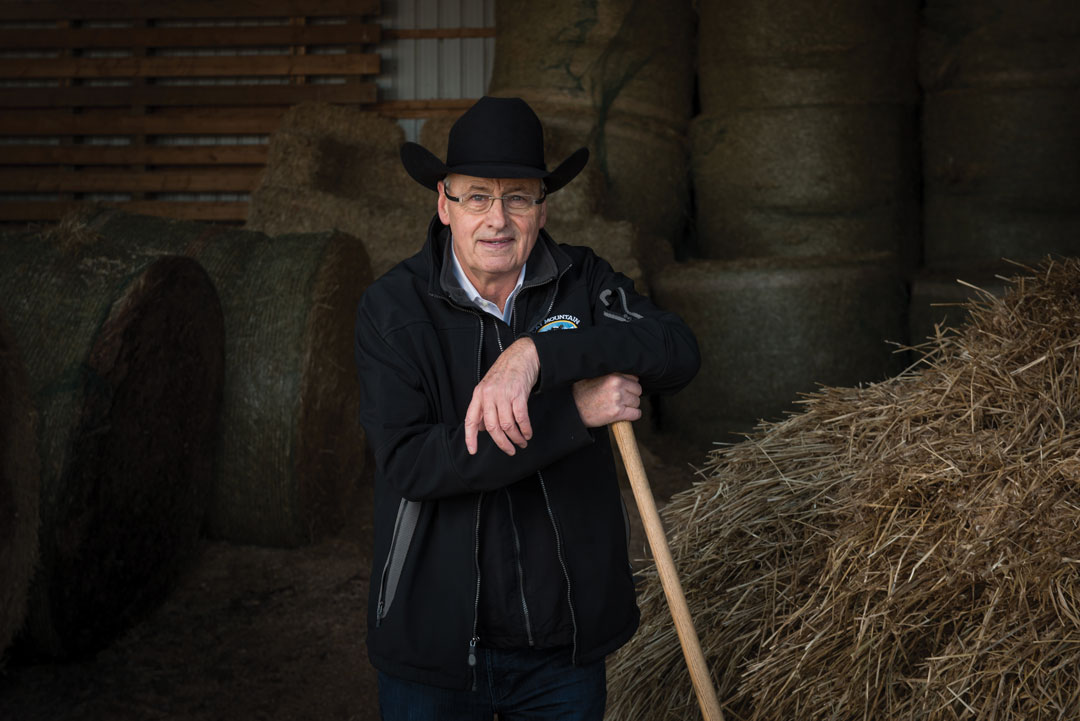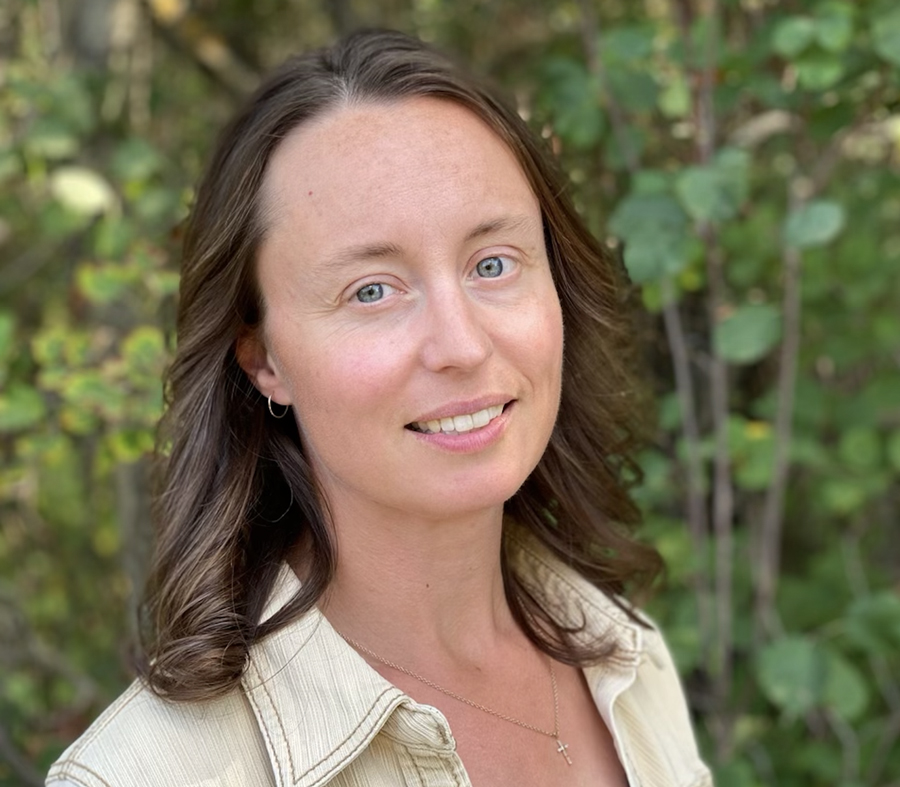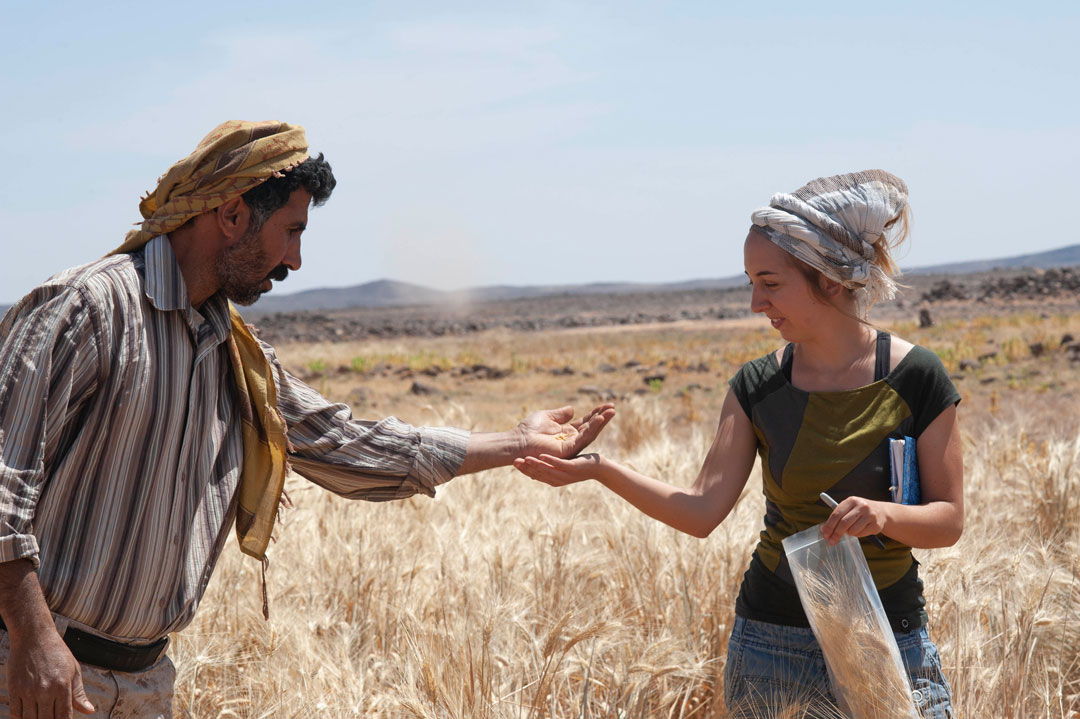A CLEAR PATH TO RESULTS
BY ELLEN COTTEE • PHOTO BY ROB McMORRIS PHOTOGRAPHY
Research drives growth, profitability and sustainability in agriculture, but what drives research? To Dave Chalack, it’s always been clear the main impetus behind the funding of scientific research should be to produce results for farmers. Chalack has brought his decades of agricultural experience to the position of interim board chair of the newly formed Results Driven Agriculture Research (RDAR). The organization embodies Alberta’s fresh direction in grant allocation.
Its 50-member advisory committee is comprised largely of farmers and ranchers. Additional members include representatives of post-secondary institutions and other research entities. These experienced advisors will provide input in key areas such as finance, operations, governance and, of course, research. With the ability to administer $37 million in grants annually, the group will focus on projects that demonstrate direct benefit for farmers.
It was this commitment to the farm bottom line that drew Chalack to RDAR. Alberta’s newest research organization will oversee investment with an eye on the generation of profitability and competitiveness. The group has now begun to award project funds, just nine months following its inauguration.
GrainsWest: You started out as a veterinarian and switched gears to join the Alta Genetics team where you are now the international marketing director. What drove that change in career?
Dave Chalack: I was born and raised on a dairy farm west of Calgary, passionate about breeding cattle. I was the oldest and didn’t automatically take over the farm as is sometimes the case. I initially went to school with the objective of getting a degree in agriculture, but partway through I saw other people applying to med school. I said, ‘if they can get in, I can get in.’ So I went into veterinary medicine at the University of Saskatchewan. I was injured by a horse while I was a vet and had to have two back surgeries, so I wasn’t looking to continue. At that time, the then-president and CEO of Alta Genetics, Doug Blair, called and asked if I would head up their live cattle division. That was in 1989, and I’ve been working in various roles there since.
GW: In addition to your long history with Alta Genetics, you’ve also enjoyed an extensive tenure on many boards, including serving as director of the Calgary Stampede for 17 years. What draws you to these roles?
DC: Where I really started to focus on governance was at the Calgary Stampede, as I was in leadership. I firmly believe, and this goes across all organizations but is very applicable to agriculture, the foundational importance of good governance processes, understanding roles and responsibilities and how the decisions are made. I’m focused on governance; I’ve served on many boards. Organizations tend to flounder around the governance piece, and then it cascades through performance, financial and other areas.
GW: How does RDAR differ from other groups or councils that now exist?
DC: We’re different because we are not an arm of government. We are independent and we [are] arm’s-length. We are an entity with membership, members who will be voting and appointing their own directors, approving their own bylaws and the mechanics of how we operate from a governance and process perspective.
We also represent both livestock and crops, really the first time in Alberta that has happened. We need to think about the greater agriculture view, not just one sector. Let’s come up with priorities that can cross over sectors, and therefore leverage the results and get people thinking more broadly. We were very successful in that. We will also have a commitment of longterm, stable funding.
GW: What can you tell me about how research projects are selected?
DC: We will identify research projects based on their merit. Not all research projects produce successful outcomes in terms of improving productivity in the way producers operate. We will very much focus on getting the results to producers in a form that can be adopted.
So, we won’t be focusing so much on pure research. It will be more in the middle. We want it to be applied and with an emphasis on transfer of knowledge.
GW: The group has moved quickly. Proposals went out in early winter and now applicants are being notified. How soon will we start to see results from RDAR operations?
DC: We’re shortening the timeline to award these projects [in January]. Then the research projects can take from six month to two years to even longer, so it takes time. But keep in mind that we are ensuring there are no gaps in the transfer and we will fund research and other activities that are up and ready, making sure they continue to evolve and develop with reporting of results continually.
GW: You are now serving as RDAR chair on an interim basis. Will you continue to remain involved?
DC: This is such an exciting opportunity. I’m enthusiastic and would be prepared and would like to serve. But of course, that’s not in my hands. You have to earn that privilege, that right, and earn the confidence of the members to do so.
GW: From a personal perspective, if there was one type of research you could personally fund to solve a problem in agriculture, what would it be?
DC: I would do something on the genomic side in the beef industry. There is such a great opportunity in the beef sector to adopt genomics through selection. The second, in the same area, is improvement in synchronized breeding and the artificial insemination system. That way, the best sires for various traits in the industry can be spread over more cows in a more efficient and effective way.
GW: You grew up in agriculture and have had a long career in it. What’s the biggest change you’ve seen over the years?
DC: Definitely the scale and sophistication. I mean all of this research, training and education in smart farming and precision farming just shows that farming is no longer that sector or industry that is not competitive with other sectors in terms of modernization and adoption of new technologies. It’s very exciting.
GW: What impact has that modernization had on the industry aside from production?
DC: It’s why we have so many bright young people getting engaged and attracted to agriculture, even those from outside the industry. There’s a whole population of students who don’t even consider agriculture as an option, they want to be an engineer or work in IT. You can have all that and work in agriculture.
GW: Is there anything that worries you about the future of agriculture in Alberta?
DC: I am an optimist, I’m a glass-half-full kind of guy. I’m not despondent about the state of agriculture. We have to unleash our potential and harness that to create jobs and through research, innovation and knowledge transfer we can get producers to a greater level of profitability and, thus, sustainability.







Comments